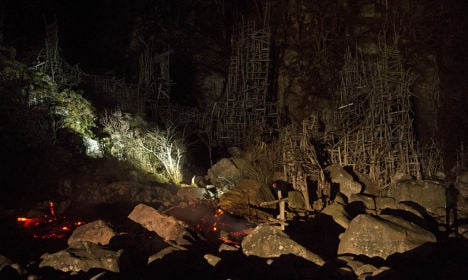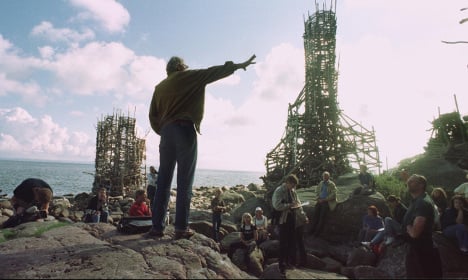The 75-year-old has lived under police protection due to death threats over his 2007 Prophet Muhammad drawing. He and two police officers were killed in a collision with an oncoming truck, Swedish police confirmed to AFP, and the accident is currently not being treated as suspicious.
“This is being investigated like any other road accident. Because two policemen were involved, an investigation has been assigned to a special section of the prosecutor’s office,” a police spokesperson told AFP, adding that there was no suspicion of foul play.
The accident occurred near the small town Markaryd when the car Vilks was travelling in crashed into an oncoming truck. Both vehicles caught fire and the truck driver was sent to hospital for treatment, according to police. In a statement, the police said the cause of the accident was unclear.
“The person we were protecting and two colleagues died in this inconceivable and terribly sad tragedy,” said regional police head Carina Persson.
Vilks had been under police protection since 2010, after his cartoon of Muhammad with a dog’s body published in Swedish newspapers three years earlier prompted outrage among those who consider depictions of the Muslim prophet deeply offensive or blasphemous. Al-Qaeda offered a $100,000 reward for Vilks’ murder.
The depiction also sparked diplomatic friction, with Sweden’s then prime minister Fredrik Reinfeldt meeting ambassadors from several Muslim countries to ease tensions. In 2015, Vilks survived a gun attack at a free-speech conference in Copenhagen that left a Danish film director dead.
While the Muhammad drawing is what Vilks was best known for internationally, he was primarily a sculptor.
His most significant work is the driftwood sculpture Nimis, which he began building in a Skåne national park in 1980.
This work was also not without controversy; Vilks built it illegally without acquiring a permit, sparking a legal dispute with local authorities who demanded it be destroyed. The artist sold both Nimis and a second artwork, and although he was fined for building them, and Nimis was badly damaged in a 2016 fire, they remain largely standing today.





 Please whitelist us to continue reading.
Please whitelist us to continue reading.
burning in hell permenant
Yes he is now..Such arrogance can not prevail for long..